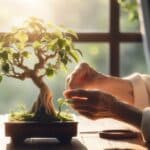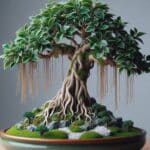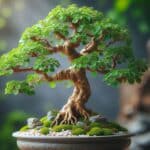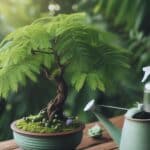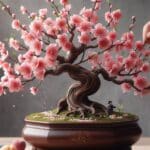Can any tree species be turned into a bonsai? This is a common question among bonsai beginners who want to try this beautiful hobby.
The short answer is yes, any tree and even other plant species with a wood-like structure can be turned into a mini bonsai tree. It is true that not all of these candidates will be easy to manipulate and not all trees or shrubs will develop into beautiful bonsai trees with a scaled miniature appearance. Some species look more like a potted tree than an authentic bonsai.
Bonsai gardening originated in China over 2,000 years ago, and bonsai enthusiasts have greatly developed their techniques, knowledge, and skills to a point where the right growing method will allow you to keep just about any tee species small and beautiful to some degree.
Several factors can impact plant species’ suitability for growing miniature trees. This guide will explore these factors and look at some of the most straightforward and difficult species for growing a miniature tree.
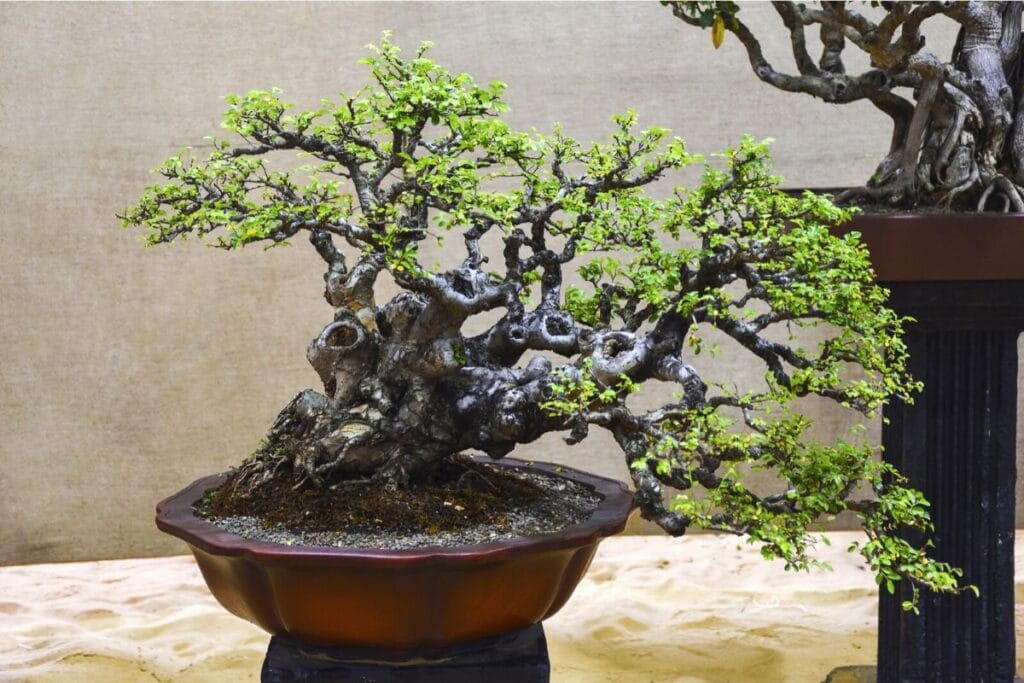
Characteristics of Trees Suitable for Bonsai
The easiest way to determine whether a plant is suitable for growing a bonsai is by considering its growing characteristics. Here are some of the most important characteristics that can make a tree species more susceptible to bonsai growing.
Suitable for Container Planting
“Bon-sai” is a Japanese term that means “planted in a container” if translated. Indeed, some trees grown in the ground are also often considered ‘bonsai trees,’ but for most bonsai artists, the minimum requirement is that the tree be potted. Ideally, the bonsai pot should also have a flat and broad design.
Not all tree species can grow well in a container since some have a root system that is too vigorous for these confined spaces and they tend to die if their space is restricted. You will grow your bonsai tree much more successfully if the species takes well to container planting.
Tolerates Root Pruning
Root pruning is done every 1 – 5 years because it can help restrict the tree’s growth and keep the container from overgrown with roots. Trees that don’t tolerate repotting or don’t like their roots to be disturbed tend to die out during this maintenance task. It is usually best to focus on species tolerating this stressful technique.
Climate
Choose your plants from a local nursery because working with plant species that grow well in your local climate is best. Foreign trees might not adapt to your region’s climate and will require a lot of special care to keep them alive. Japanese maples, for example, are very popular but can only be grown at a specific temperature.
You might even need to create a more suitable habitat for these foreign species by using growing lights, humidity trays, and other types of accessories, which can make the care process tedious.
Some trees grow better indoors, while others are more suitable for outdoor environments. You should also consider this when selecting a tree variety for bonsai.
Aesthetics
Any tree can technically be used for growing bonsai, but not all species will look aesthetically pleasing. If the leaves are too big, your bonsai might appear like a young sapling, and achieving an aged and scaled miniature appearance will be difficult.
The best candidates for bonsai trees are usually species with small leaves, small flowers, exciting bark patterns, and those that naturally produce a lot of branches.
Tolerates Pruning
Pruning is one of the most common bonsai techniques. This technique allows the artist to shape the tree into a suitable bonsai style and manipulate its growth to appear more mature and visually appealing.
Some plant species do not respond well to pruning and some naturally don’t produce enough branches for pruning or manipulation. Older trees can also be difficult to manipulate and prune if the stem has already hardened.
What Is the Easiest Tree to Bonsai
For beginner bonsai artists, focusing on species that are typically easy to grow, maintain, and care for is usually best. Many beautiful bonsai trees are very easy to grow and are very forgiving when it comes to repotting or pruning. Let’s look at some species that are typically easy to grow and care for.
Ficus Bonsai
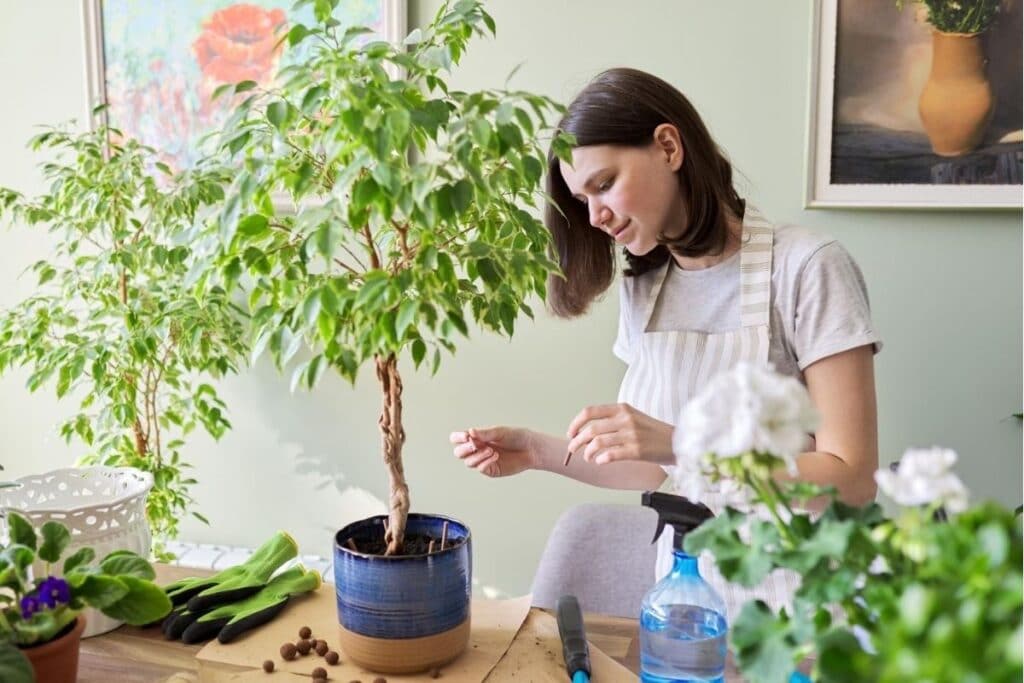
The ficus tree (Ficus retusa) is by far the easiest plant to use for bonsai trees and it is likely the most popular tree used for growing these miniature creations. Ficus trees are ideal for beginners because they are easy to propagate, grow well in containers, respond well to repotting and hard pruning, make good indoor bonsai, and tend to have more flexible stems that are easier to manipulate to create different bonsai shapes.
Dwarf Jade Bonsai
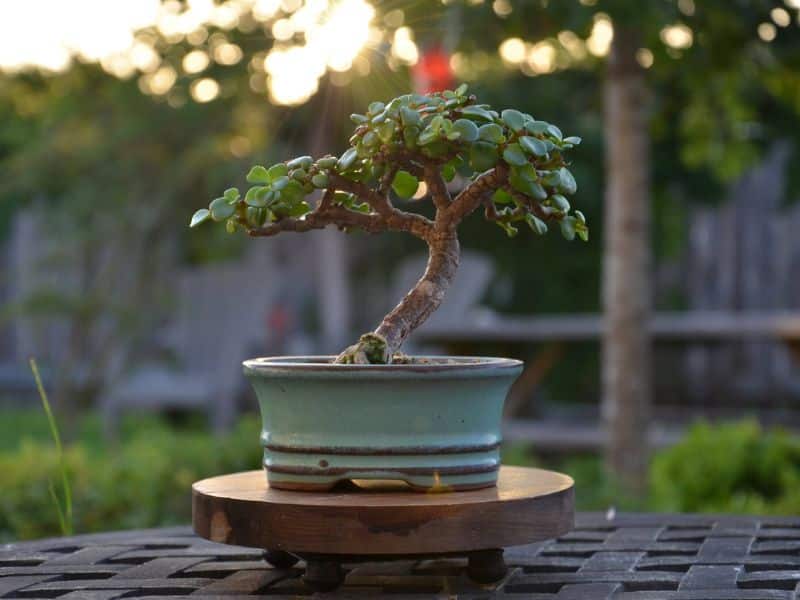
The dwarf jade (Portulacaria afra) is technically a succulent and is one of the easiest indoor bonsais you can grow. This plant is drought tolerant, very easy to propagate, and naturally adopts the shape of a bonsai tree. This tree is also easy to repot, prune, and wire and grows fast, so you can get an attractive bonsai quickly.
Bougainvillea Bonsai

Bougainvillea bonsai trees (Bougainvillea) are the easiest flowering bonsais you can grow. This plant grows rapidly during its growing season, is drought tolerant, tolerates pruning very well and can achieve a beautiful bonsai shape within just a year. However, Bougainvilleas require a lot of regular pruning or can quickly revert into shrub form.
What Is the Hardest Tree to Bonsai
Some plant species are pretty hard to bonsai. Bonsai artists need a lot of experience to craft and care for these trees or they won’t survive. Intermediate bonsai varieties also tend to take much longer to grow or to shape into a desired form.
Here is a quick look at some of the bonsai species that are best left for trained bonsai specialists.
Cherry Bonsai
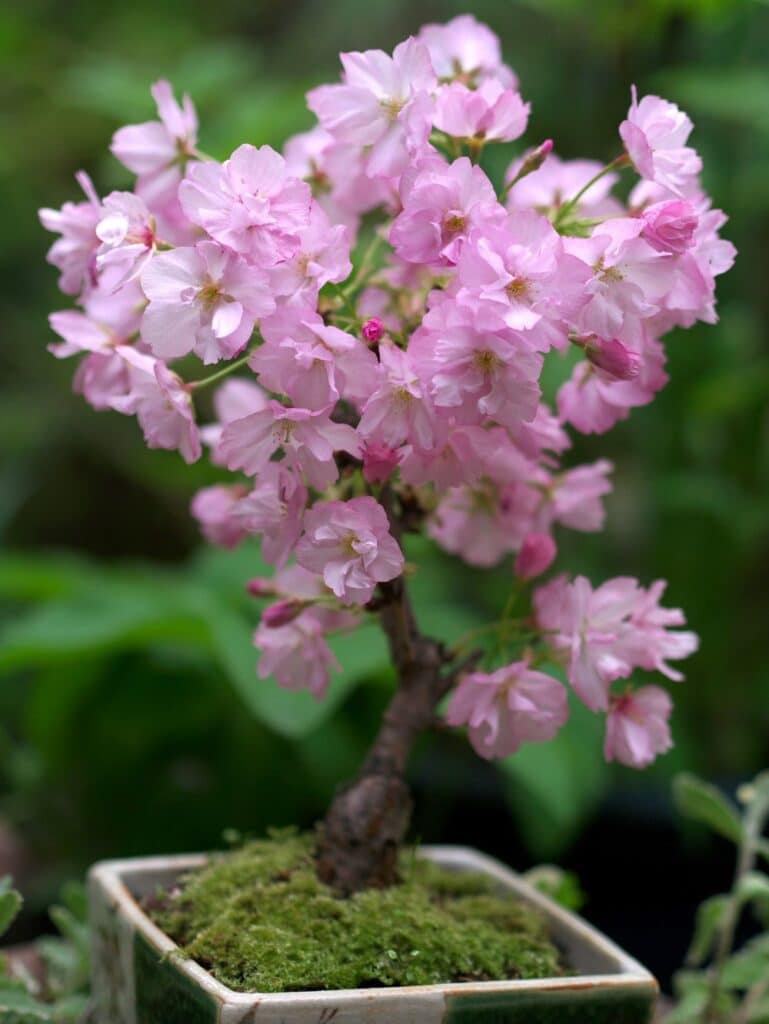
Cherry blossom bonsai trees (Prunus serrulata) are beautiful but they are very hard to keep alive and well. These trees don’t tolerate heavy root disturbance well, they are vulnerable to a variety of pests, need to be protected from extreme temperatures, and will die if they get calcareous water.
Cedar Bonsai
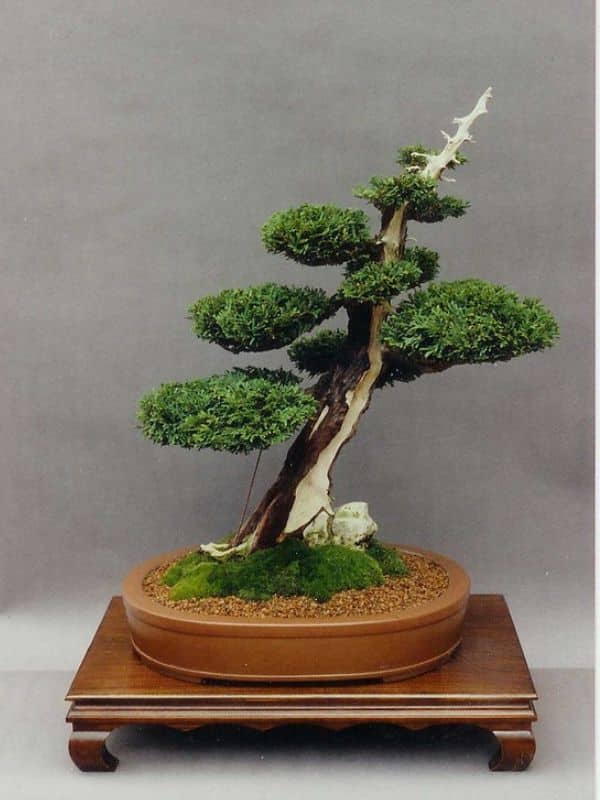
Cedar trees (Cedrus) are difficult to come by and can be a difficult species to maintain because it is prone to root rot and scarring, the wounds take long to heal, they don’t take well to heavy root pruning, and they are vulnerable to pests and diseases.
Hickory Bonsai

Hickory trees (Carya) are also pretty tough to bonsai since they have large leaves, inflexible wood, long internodes, and a large taproot. These trees are difficult to style shape and keep alive in limited space.
Conclusion
Bonsai gardening is quite exciting because so many different species can be used to create a beautiful miniature tree. It can be a lot of fun to grow and collect a variety of tree species. While any type of tree can technically be used for bonsai, not all are easy to work with, and it can be heartbreaking to pour a lot of time and energy into a bonsai tree only to see it wilt and die.
Avoiding large trees and starting your bonsai from a young sapling is usually better. If you want to keep maintenance low and increase the survival rate of your bonsai then it is also better to focus on plants with a high bonsai success rate and to avoid species that tend to be difficult to grow.
We hope our guide made it easier to select a suitable species to avoid disappointment and grow a better bonsai. For most, it is best to start with a bonsai that is easy to grow and to gradually move on to more advanced trees like a Chinese elm, juniper, or pine tree as your skills in this art form improve.


